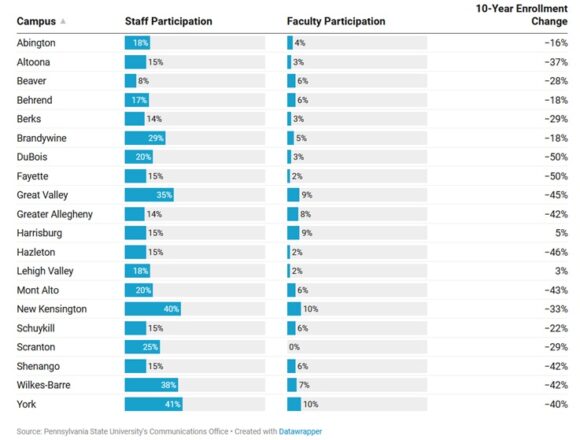Buyout by Campus at Penn State System
Dear Commons Community,
At Pennsylvania State University at New Kensington, forty percent of the staff and 10 percent of the faculty there have taken voluntary buyouts that were offered across the system’s regional campuses earlier this year. Among those leaving the campus, where enrollment has dropped by about a third over the past 10 years, were the registrar, the director of student affairs, all three employees in the business and finance office, and the chancellor. As reported by The Chronicle of Higher Education.
Buyouts are intended to be a humane way to cut costs while avoiding layoffs and allowing employees a measure of agency in deciding when to leave a job. But they can hurt morale and have unintended consequences, like when more people — or different ones than expected — raise their hands to go. That’s what many faculty and staff think happened at New Kensington.
While buyouts are fairly common in higher education as a way to reduce costs, according to Robert Kelchen, a professor in educational leadership and policy studies at the University of Tennessee at Knoxville, they are typically aimed at employees closer to retirement. “It’s not exactly the most strategic option, but it’s an option,” Kelchen said. “If the goal is to try to free up money or turn over the work force, it’s probably the best way to do it, but you have an issue of the people you really want to take the buyout may not take the buyout, or you have too many people take the buyout and a unit is effectively demolished.” In addition, he said, laws and union contracts mean colleges may have limited options for how they implement buyouts.
Across Penn State’s regional campuses (see chart above), about one in five eligible employees took the buyout, although the numbers varied significantly across the 20 institutions. Many left in June; the rest, who were asked to stay on to help ease the transition, will leave by the end of December.
This may also be a sign that unemployment is at an all-time low and that there are many opportunities to find new positions. It is a worker’s market.
Tony


